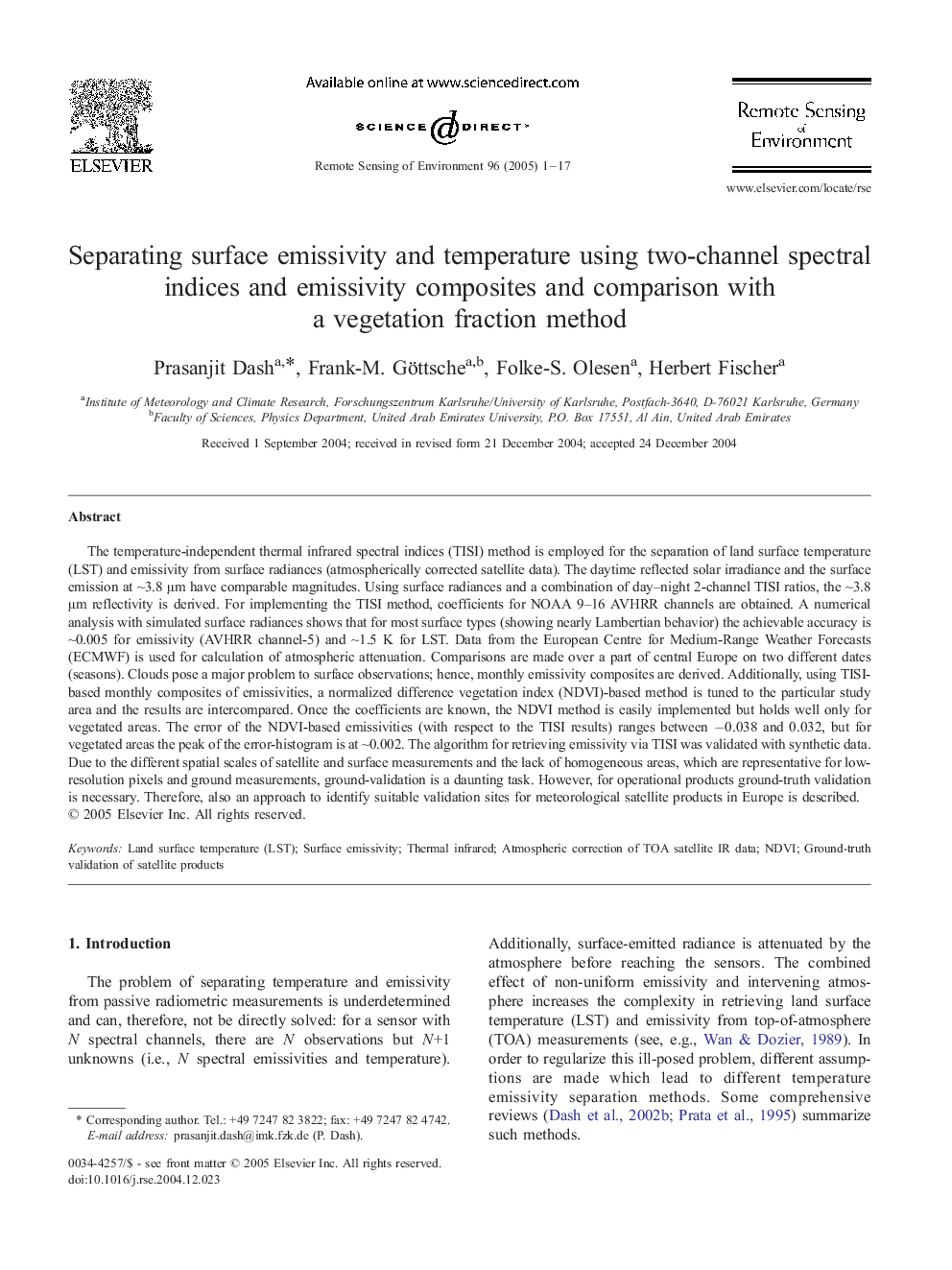| Article ID | Journal | Published Year | Pages | File Type |
|---|---|---|---|---|
| 10114232 | Remote Sensing of Environment | 2005 | 17 Pages |
Abstract
The temperature-independent thermal infrared spectral indices (TISI) method is employed for the separation of land surface temperature (LST) and emissivity from surface radiances (atmospherically corrected satellite data). The daytime reflected solar irradiance and the surface emission at â¼3.8 μm have comparable magnitudes. Using surface radiances and a combination of day-night 2-channel TISI ratios, the â¼3.8 μm reflectivity is derived. For implementing the TISI method, coefficients for NOAA 9-16 AVHRR channels are obtained. A numerical analysis with simulated surface radiances shows that for most surface types (showing nearly Lambertian behavior) the achievable accuracy is â¼0.005 for emissivity (AVHRR channel-5) and â¼1.5 K for LST. Data from the European Centre for Medium-Range Weather Forecasts (ECMWF) is used for calculation of atmospheric attenuation. Comparisons are made over a part of central Europe on two different dates (seasons). Clouds pose a major problem to surface observations; hence, monthly emissivity composites are derived. Additionally, using TISI-based monthly composites of emissivities, a normalized difference vegetation index (NDVI)-based method is tuned to the particular study area and the results are intercompared. Once the coefficients are known, the NDVI method is easily implemented but holds well only for vegetated areas. The error of the NDVI-based emissivities (with respect to the TISI results) ranges between â0.038 and 0.032, but for vegetated areas the peak of the error-histogram is at â¼0.002. The algorithm for retrieving emissivity via TISI was validated with synthetic data. Due to the different spatial scales of satellite and surface measurements and the lack of homogeneous areas, which are representative for low-resolution pixels and ground measurements, ground-validation is a daunting task. However, for operational products ground-truth validation is necessary. Therefore, also an approach to identify suitable validation sites for meteorological satellite products in Europe is described.
Related Topics
Physical Sciences and Engineering
Earth and Planetary Sciences
Computers in Earth Sciences
Authors
Prasanjit Dash, Frank-M. Göttsche, Folke-S. Olesen, Herbert Fischer,
